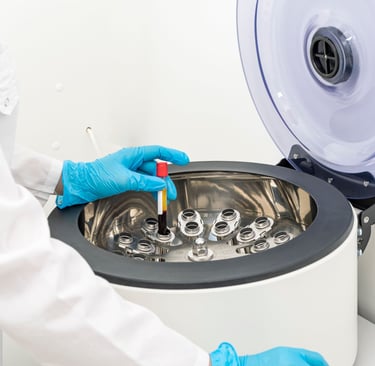Biologic Therapies for Tendon and Muscle Injury
Exploring New Frontiers in Regenerative Medicine


Introduction: Biologic therapies, often referred to as "biologics," represent a fascinating frontier in regenerative medicine, offering new hope for the treatment of a wide range of musculoskeletal conditions. In this article, we embark on an exciting journey through the world of biologic therapies for tendon and muscle injuries, exploring their mechanisms, clinical applications, and the evolving landscape of evidence supporting their use. These therapies have gained remarkable momentum and are poised to revolutionize the field of regenerative medicine.
Terminology and Background: The term "biologic therapies" encapsulates innovative treatments that go beyond traditional pharmacological approaches, focusing on the use of substances such as cells and tissues. Within musculoskeletal medicine, these therapies can be broadly categorized into two inspiring groups: blood-derived therapies and cellular therapies.
Blood-Derived Therapies: These encompass treatments like autologous whole blood (ABI) and platelet-rich plasma (PRP). PRP, in particular, stands out as it harnesses the power of platelets, which release a myriad of growth and inflammatory factors, promising accelerated tissue healing.
Cellular Therapies: This category opens up a world of possibilities by introducing various cells directly into the affected tissue. The roster includes mesenchymal stem or stromal cells (MSCs), autologous tenocytes, and dermal fibroblasts, each carrying the potential to trigger remarkable regenerative processes.
The Expanding Popularity: Over the past decade, we've witnessed an exhilarating surge in clinics offering biologic therapies for muscle and tendon injuries. This growth can be attributed to several factors, including the dearth of established treatments for these conditions, the simplicity of administration, and the enthusiastic marketing efforts of biotechnology companies. While regulations are beginning to take shape, the journey ahead holds the promise of a more widespread availability of these treatments.
Proposed Mechanisms and Production of Biologic Therapies: Blood-derived therapies like PRP draw their strength from the activation of platelets, which release a diverse array of growth and inflammatory factors. What's truly exciting is the varying platelet concentrations in PRP, opening up possibilities for tailoring treatments to individual needs. Cellular therapies, led by MSCs, offer an enchanting prospect of direct incorporation into injured tissue, driven by local signals. These cells can be harvested from sources like bone marrow or adipose tissue and undergo a fascinating multi-stage manufacturing process.
Indications and Contraindications for Biologic Therapies: The horizon for biologic therapies appears limitless, with proponents advocating for their application in an extensive range of clinical scenarios. PRP is already making strides in conditions like osteoarthritis and tendinopathy, while MSCs continue to captivate researchers. Contraindications are indeed important to consider, with patient-specific factors like allergies, malignancies, infections, and medication use guiding the treatment path. Additionally, the intriguing realm of doping in sports introduces its own set of guidelines when contemplating biologic therapies.
Biologic Therapies for Tendon and Muscle Injuries: Tendon injuries, particularly the challenging degenerative overuse tendon injuries, pose exciting opportunities for exploration. Studies on the efficacy of PRP and ABI may yield contradictory results, yet the journey of discovery is filled with promise. For muscle injuries, the emerging evidence suggests that PRP may lead to quicker returns to sport, hinting at a brighter future for athletes. Meanwhile, the world of MSCs remains full of potential, with ongoing research poised to reveal their true capabilities.
Safety and the Quest for Proven Effectiveness: One paramount takeaway is that biologic therapies, including PRP and MSCs, appear to be remarkably safe, carrying minimal risks and adverse effects. What truly ignites our enthusiasm is the potential of these therapies to unlock new frontiers of healing. While the evidence hints at their safety, the journey to fully realizing their efficacy is still underway. The promising findings, albeit with methodological challenges, make us eager to uncover their full potential.
In summary, biologic therapies stand as beacons of hope for the treatment of tendon and muscle injuries, heralding a new era in regenerative medicine. The path forward is filled with promise and excitement. While we currently recommend these therapies within well-designed clinical trials, the prospect of further research and exploration promises to unlock their full potential, offering a brighter future for patients and athletes alike.
REFERENCES
Rubin R. Unproven but Profitable: The Boom in US Stem Cell Clinics. JAMA 2018; 320:1421.
The Prohibited List. World Anti-Doping Agency. Available at: https://www.wada-ama.org/en/prohibited-list (Accessed on November 01, 2022).
Topic 117566 Version 9.0


